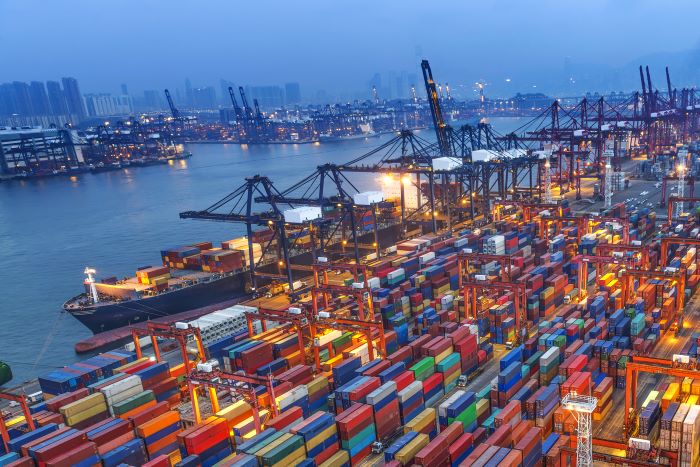
The consumption pattern in the US in January shows normalization is not close to being restored. Photo credit: Shutterstock.com.
As is by now familiar to all participants in the container shipping sector in North America, the current congestion issues are due to two core reasons: a larger-than-usual boom in demand, combined with the pandemic reducing efficiency at some ports. Neither of these are unlikely to abate soon.
The large boom in demand has now been sustained since summer 2020 and is fundamentally due to consumers not being able to spend as much money on services as usual, and they have therefore switched part of that consumption into goods.
To put some numbers to this, personal consumption expenditures in the US in January 2020 before the pandemic was $13.4 trillion. Hereof, $4.8 trillion was spent on goods. With the latest data, it can be seen that January 2021 saw personal consumption of goods increase to $5.3 trillion. This is a 10 percent growth — an additional $480 billion spent buying goods on top of the normal flow from before the pandemic. And this spending was added in the month of January alone.
But it also shows the extreme split in the current economy. All told, personal consumption spending dropped $250 billion in January compared with the same time last year as the spending on services declined in excess of $700 billion in the same time frame.
Are we on a path to normalization?
After an initial period of sharp economic decline in Q2 2020, we have now seen this extreme split where spending on goods is booming and spending on services is dropping sharply since June last year. It would then be reasonable to ask whether we might be seeing some degree of normalization — especially whether there are signs of the consumer boom slowing down.
The data for January 2021 suggest the opposite.
Spending on goods showed a higher growth rate in January than at any point in the boom in the second half of 2020. Durable goods purchases were up $313 billion year on year in January 2021, equal to a growth rate of 17 percent. During the boom in 2020, this growth rate peaked at 15 percent in October and slowly abated to 9 percent in December. Additionally, it is the highest year-on-year growth rate for durable goods since 1984.
From a container shipping perspective, it is especially noteworthy that furnishings and household equipment — which takes up a lot of space in containers — increased $67 billion, equal to a 16 percent growth rate. This was also far higher than the growth rates seen during the boom in the second half of 2020, and we have in essence not seen such a high growth rate since records began in 1959, although a small boom in 1973 came close.
Many categories of goods sold in January saw not only a strong increase, they showed a growth rate either matching or higher than at any month seen during the boom in 2020. The only major category of goods to see a material decline was, not surprisingly, sales of luggage.
But can this continue? As long as the consumers still cannot effectively choose to spend on services as they want to, this could potentially be sustained. Adding to this, we should keep in mind that the US government has just agreed to new stimulus legislation. The $500 billion growth in consumer spending in January is equal to some $1,500 per person in the US, only slightly higher than the checks a lot of US citizens will be receiving. Hence, those checks can have a material impact in prolonging the current boom, even though not all stimulus money will be spent on goods, nor will checks be granted to all.
Hence, the consumption pattern in January in the US does not point in the direction of normalization — quite the opposite in fact.
What is in store?
With consumption of goods increasing as we get into the third month of 2021, this points to additional pressure on the inbound supply chains. Inbound container volumes to the US, irrespective of origin, grew in excess of 20 percent in October and November, then went below 20 percent for December and January. With the increase in goods consumption, this might well trigger additional ramp-up in demand growth at a point in time where both vessel, equipment, port, and terminal capacity is scarce.
Or to put it in other words, there is presently no sign in the economy that the demand boom into the US will slow down in the short term. At the same time, there is no sign from the operational side of the container shipping industry that the bottleneck effects will be resolved in the short term. Shippers need to plan for the current challenges to be a normal state of affairs for a while longer.
Contact Lars Jensen at Lars.Jensen@SeaIntelligence-consulting.com.
"consumption" - Google News
March 15, 2021 at 11:00PM
https://ift.tt/3tiaZXA
Trade-Lanes: US import boom intensifies, with no end in sight - JOC.com - JOC.com
"consumption" - Google News
https://ift.tt/2WkKCBC
https://ift.tt/2YCP29R
Bagikan Berita Ini














0 Response to "Trade-Lanes: US import boom intensifies, with no end in sight - JOC.com - JOC.com"
Post a Comment